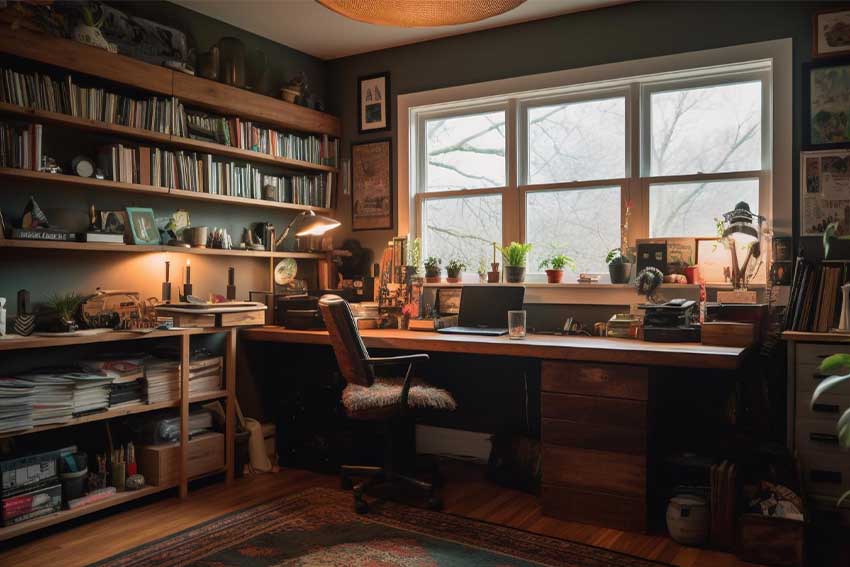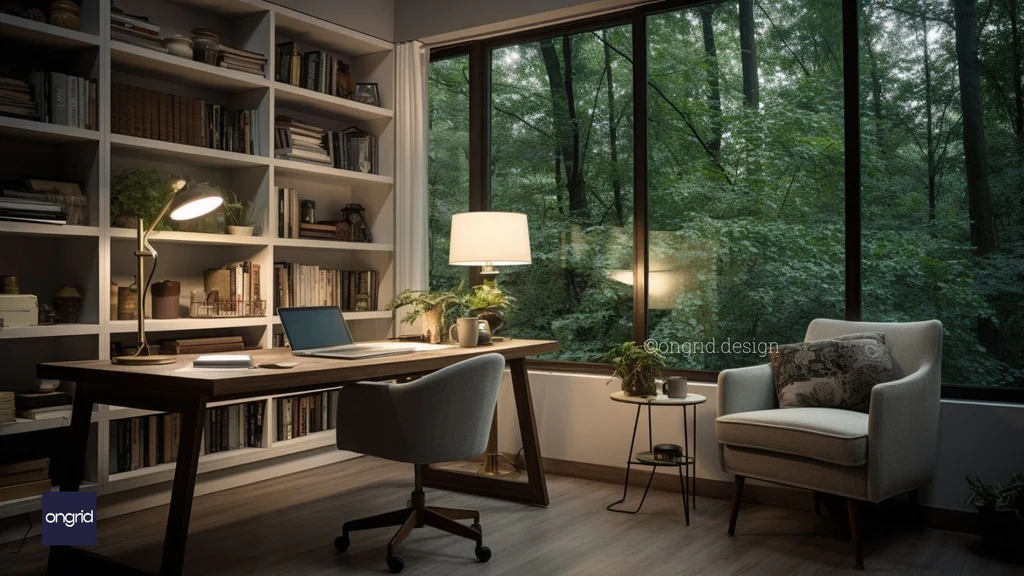Blog
Lighting Solutions for a Focus-Friendly Study Area
Lighting is a key element in creating a study space that promotes focus, productivity, and comfort. Poor lighting can lead to eye strain, headaches, and a lack of concentration, while well-chosen lighting can enhance mood, improve visibility, and reduce fatigue. Whether you’re studying for hours, working on a project, or reading a textbook, the right lighting can make all the difference. Here are some lighting solutions to help you create a focus-friendly study area that supports both your academic goals and well-being.

1. Use Natural Light Whenever Possible
Natural light is the most ideal form of lighting for a study space, as it enhances mood and promotes alertness. Exposure to natural light can also help regulate your sleep-wake cycle, making it easier to focus during the day and sleep better at night.
- Position Your Desk Near a Window: Try to place your desk in a spot where you can take advantage of natural light. Sitting near a window will allow sunlight to naturally illuminate your space, which can boost your mood and increase productivity.
- Maximize Daylight: If you’re lucky enough to have large windows, take full advantage of the natural light they provide. Keep windows unobstructed by heavy curtains, and opt for light, sheer window treatments that let in plenty of daylight while still offering some privacy.
- Consider a Sunlight Simulation Lamp: If your study space doesn’t receive much natural light, especially during the winter months, consider investing in a sunlight simulation lamp. These lamps mimic the natural spectrum of daylight, which can help improve your energy levels and focus.
2. Task Lighting for Focused Work
Task lighting is a type of lighting designed to illuminate a specific area, such as your desk, without creating glare or shadows. It’s essential for reducing eye strain and ensuring that you can read, write, and work with ease.
- Desk Lamp: A well-designed desk lamp provides focused light on your workspace, allowing you to read and write without straining your eyes. Look for a lamp that offers adjustable brightness levels and is positioned to shine directly onto your workspace without causing harsh shadows.
- Adjustable Desk Lamps: Choose a desk lamp with a flexible arm that allows you to direct the light exactly where you need it. Adjustable height and angle options let you position the light at the perfect spot for comfort and efficiency.
- LED Desk Lamps: LED desk lamps are energy-efficient and often come with adjustable brightness and color temperature settings. Look for lamps with a “warm white” setting to reduce eye strain during long study sessions, as bright, cool light can be harsh and uncomfortable.
3. Ambient Lighting for Overall Comfort
Ambient lighting is the general light that fills a room and provides a comfortable, evenly-lit atmosphere. It’s important to have a good balance of ambient light in your study area to avoid creating shadows or areas that are too dim.
- Ceiling Lights: A well-lit room starts with good ceiling lighting. Opt for a ceiling fixture that evenly distributes light across the room, such as a chandelier, pendant light, or flush-mounted ceiling lights. Consider dimmable fixtures so you can adjust the brightness as needed.
- Soft, Diffused Light: Soft lighting that spreads evenly across the room is essential for reducing eye strain. Avoid harsh, direct light sources that can cause discomfort during prolonged reading or writing.
- Overhead LED Lights: Modern overhead LED lights are energy-efficient and provide a clean, bright source of ambient light. Look for fixtures with a dimming option so you can adjust the brightness based on the time of day and your study needs.
4. Accent Lighting to Set the Mood
Accent lighting can be used to create a comfortable and motivating study atmosphere. While it’s not necessarily focused on the desk area, accent lighting helps define the space and adds a personal touch to your study environment.
- String Lights or Fairy Lights: String lights can add a cozy, relaxed vibe to your study space. Place them around bookshelves, along the edges of the walls, or above your desk. These lights can help reduce the harshness of overhead lighting, creating a calm and inviting atmosphere.
- Table or Floor Lamps: Incorporate a stylish table or floor lamp to complement your desk lamp. These can provide subtle background lighting that enhances the overall ambiance of the room. Choose lamps that fit the style of your space while offering soft, warm light.
5. Consider Color Temperature for Optimal Focus
The color temperature of your lighting has a direct impact on your mood, focus, and productivity. Lighting that is too warm or too cool can either make you feel sluggish or overly stimulated. Finding the right balance is crucial for a productive study area.
- Warm White (2700K–3000K): This soft, warm light is ideal for creating a calm, relaxing atmosphere. It’s perfect for evening study sessions when you want to unwind without straining your eyes. Warm white lighting mimics the natural light of sunrise and sunset, helping to reduce stress.
- Cool White (4000K–5000K): Cool white lighting is ideal for daytime use as it helps increase alertness and focus. This brighter, more neutral light is perfect for studying in the afternoon or morning, as it mimics natural daylight and can help you stay awake and energized.
- Daylight (5000K–6500K): Daylight bulbs are designed to closely resemble sunlight. These are excellent for brightening up a dim study room and can help increase concentration and energy levels. However, they may be too intense for evening study sessions, so consider switching to a warmer light as the day progresses.
6. Smart Lighting for Convenience
Smart lighting is a great option for students who want to customize their lighting for different tasks and times of the day. With smart bulbs, you can adjust the brightness, color temperature, and even set schedules to suit your study needs.
- Smart Bulbs: Install smart bulbs in your desk lamp, ceiling fixture, or accent lighting to easily control the lighting through your smartphone or voice assistant. You can adjust the color temperature and brightness based on the time of day or the activity you’re doing.
- Voice-Controlled Lighting: Using a smart speaker or voice assistant like Amazon Alexa or Google Assistant, you can control your lighting with simple voice commands. This can be particularly useful for dimming the lights when you need a break or adjusting the brightness when switching between tasks.
- App-Controlled Lights: Many smart lighting systems come with apps that allow you to create lighting schedules, adjust colors, and automate lighting changes based on your preferences.
7. Light Positioning and Desk Layout
The position of your lights is just as important as the type of lighting you choose. Properly placed lighting can help prevent glare on screens, reduce shadows, and make your study space more comfortable overall.
- Desk Lamp Placement: Ensure that your desk lamp is positioned to shine directly on your work area without casting a shadow. The lamp should be placed to the side of your dominant hand (left for left-handed people, right for right-handed people), so your hand doesn’t block the light.
- Avoid Glare on Screens: If you work with a computer, position your desk so that windows are either to the side or behind you to avoid glare on your screen. If this isn’t possible, adjust your blinds or curtains to reduce direct sunlight.
- Use Task Lighting for Precision: Place your desk lamp close to your workspace to illuminate your books, papers, or laptop without being too bright. A task lamp with adjustable arms allows you to move the light exactly where it’s needed.
8. Additional Tips for Optimizing Lighting
- Dimmer Switches: Install dimmer switches for flexibility in adjusting the brightness depending on the time of day or the task at hand.
- Use Multiple Light Sources: Combining different types of lighting, such as task, ambient, and accent lights, can help create a layered and balanced atmosphere that’s both functional and visually appealing.
- Energy-Efficient Bulbs: Choose LED bulbs for all your lighting fixtures. LED lights are energy-efficient, long-lasting, and emit less heat compared to incandescent bulbs, making them ideal for study spaces.

Conclusion
The right lighting can transform your study space, promoting a productive and focus-friendly environment. By combining natural light with task lighting, ambient lighting, and accent lighting, you can create a space that supports your study needs and helps you concentrate for longer periods. Don’t forget to consider the color temperature of your lights, and incorporate smart lighting options for added convenience. With the right lighting solutions, you’ll be able to optimize your study space and make your study sessions more effective and comfortable.


